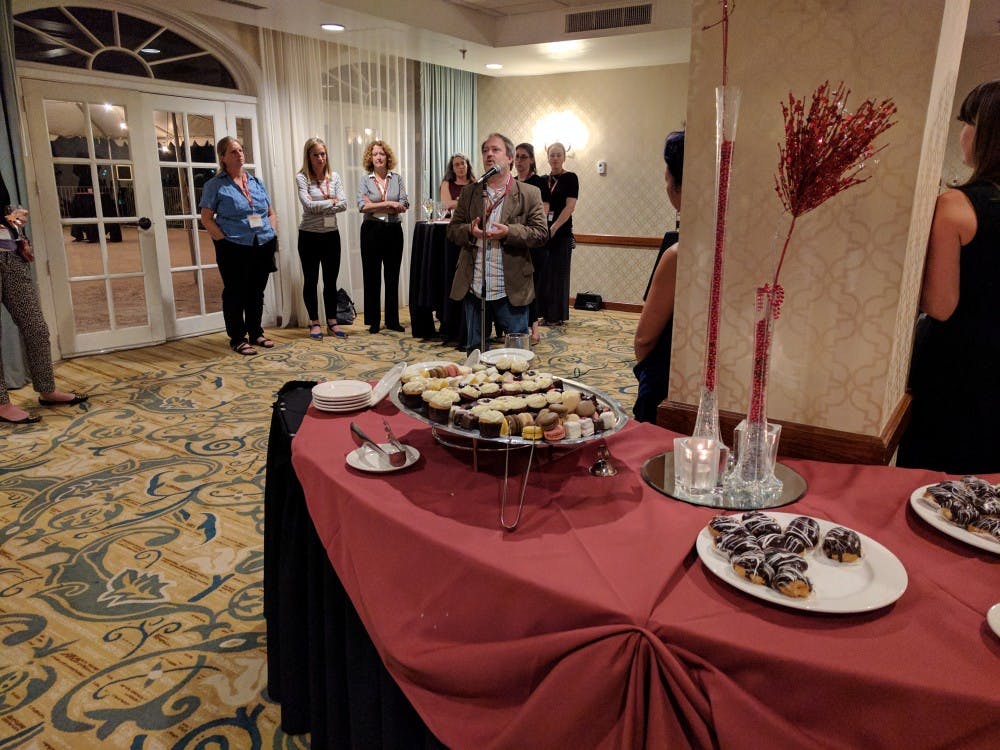Last night, an ASU scientific organization bridged the gap between the scientific and home-grown development communities in pursuit of a rare piece of collaboration in the disparate tech community.
The attendees of the third-annual ASU Citizen Science Maker Summit strove to be the first to connect the dots of interactions between academic scientists and local tinkerers and makers.
"This is an opportunity to bring together two communities that have not been brought together before," Darlene Cavalier, a founding board member of the Citizen Science Association, said.
The "two communities" are the makers (those have not hopped the hurdles to establish themselves in the scientific community) and the citizen scientists (big institutions looking for innovative ideas and tools), Cavalier said.
The members of these two communities who showed up last night hailed from all across the scientific spectrum. Even at the optional reception, representatives of 66 different organizations attended.
What everyone involved in the Citizen Science movement has in common, though, is a desire to make research and innovation in STEM more accessible to the masses.
"Citizen Science is basically a way to advance areas of research with or without formal science degrees," Cavalier said.
Citizen Science wants to democratize STEM research, and it shows. On the balcony, a man wearing a pressed suit and tie listened intently as a man in flip-flops and jeans punctuated a conversation with sips of Budweiser.
In order to lower the barrier of entry into scientific research, Citizen Science is piggybacking on the maker movement, a sort of home-brewed technological renaissance. People like the gentleman wearing sandals are the makers: new-wave artisans who get a kick out of tinkering and building in their garages from scratch.
(null)
(null)
Often times, these artisans create something revolutionary (see Steve Jobs), but equally as often, they try to improve upon the formula of a product that already exists, making it better or cheaper.
In the case of Usamma Amjad, an ASU graduate student who recently needed equipment for neurological research, the maker movement offered his wallet some relief.
"Instead of buying from the ASU machine shop, which would have cost us about $2000 per iterative mold to make our brain implants, we were able to print them all [at Tech Shop] for $0.75 for all our iterations," Amjad said.
Not everyone has the grit, though, to make their own equipment from the ground up. For Citizen Science, that's where SciStarter comes in.
SciStarter is a private company started by Cavalier that works jointly with ASU to engage the public in research projects run by citizens and professional researchers alike. Cavalier is currently working to expand SciStarter into a virtual marketplace for these new homemade research tools.
"It's called the Amazon layer, which is where we'll start selling those instruments on SciStarter," Cavalier said.
"The scientific curiosity of a whole host of people who have not normally associated themselves with the scientific process has been liberated to the point where they can set their own agendas, create their own tools and techniques, and not have to rely on the good graces of established scientists and engineers," Dave Guston, the co-director of the Consortium for Science, Policy and Outcomes at ASU, said.
This turns out to benefit amateur makers and professional organizations alike. One of Citizen Science's attendees, Brian Huang, works for a company called Sparkfun Electronics. Sparkfun has been a hub for do-it-yourself projects since 2003, and they see promise in the collaborative vision offered by Citizen Science.
"I'm hoping to just network, figure out who's doing what and also share our expertise, share the things that we've done," he said. "We've done everything from adding sensors to high-altitude weather balloons to building buoys for the Monterey Bay Aquarium."
Correction: Due to a reporting error, a previous version of this story erroneously stated two groups of the scientific community. The story has been updated to reflect that the groups, according to Cavalier, are makers and citizen scientists.
Reach the reporter at sdeadric@asu.edu or follow @deadrick_sam on Twitter.
Like The State Press on Facebook and follow @statepress on Twitter.




